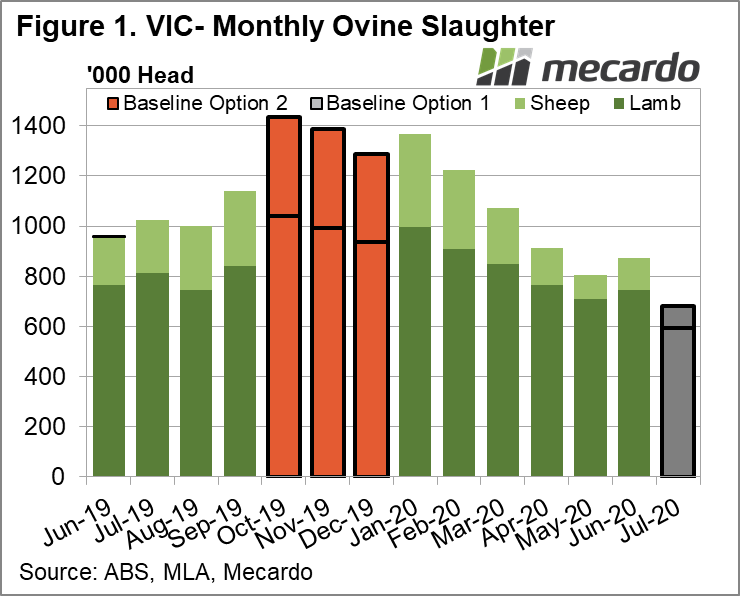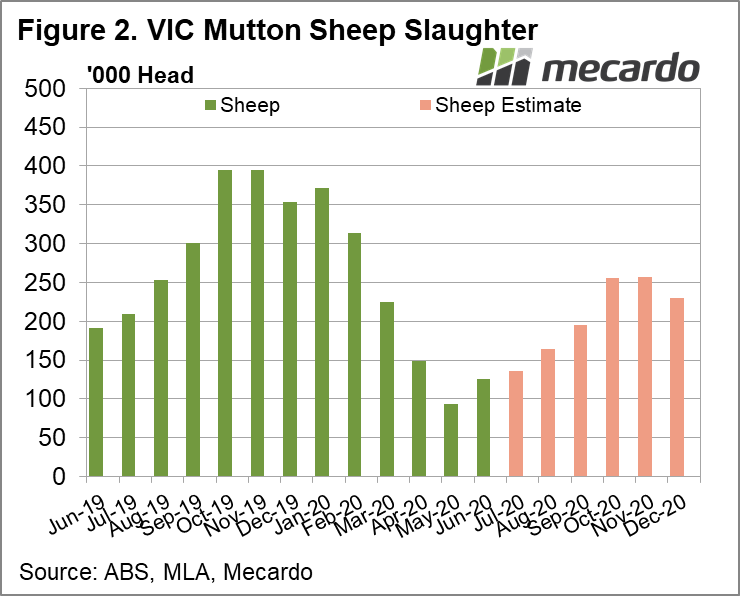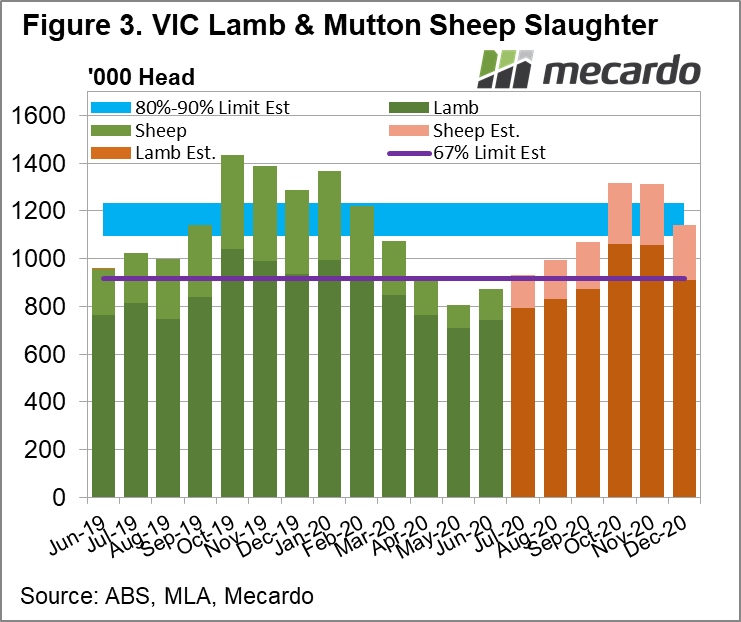On Sunday, the VIC government announced that the COVID-19 workforce size restrictions on Victorian meat processors would be eased from a 67% limit to a 80%-90% capacity limit, but what does this mean in practice for the sheep industry? In this article we pull apart the new rules and regulations and translate them into what the change might mean for the lamb market.
On August 7th, special restrictions were placed upon the Victorian meat processing industry that limited its workforce size to 67% of its peak as part of the state’s COVID-19 control and risk management response. This restriction threatened Victoria’s ability to effectively process all the lambs expected over its busiest part of the year- Spring.
On the 28th of September, restrictions were changed to 80% for processor’s in metropolitan Melbourne, and 90% in regional Victoria. Under the rules, processors had two options to determine their baseline peak capacity.
- Peak Workforce over July 2020; OR
- Peak Workforce level over any 3-month continuous period in the last 12 months.
To put some rough numbers around the restrictions, we will use a broad assumption that Victoria’s monthly lamb & sheep slaughter figures are a reasonable approximation of processor workforce peak workforce size, and that sheep and lamb slaughter space is interchangeable.
If we look at Victorian sheep and lamb slaughter numbers (figure 1) to calculate the baseline level that the majority of processors will be using; we can see that VIC July slaughter (opt 1) was pretty low compared to the rest of the year, and we have highlighted the highest continuous 3 month period, (for option 2) which is OCT/NOV/DEC 2019. It’s a safe bet that most processors will not be using option (1) July-20 as their baseline, and will opt for option (2) – the OCT/NOV/DEC 2019 period.
Average monthly slaughter over this assumed baseline period was 1.37 million head, so at 67%, the industry was restricted to 920K head of sheep and lambs. At the new, higher level of 80-90% this restriction has risen to a combined maximum of 1.1M to 1.23M head sheep and lambs per month.
This is where sheep slaughter gets relevant. Sheep slaughter is trending at 30-40% below normal levels due to producers holding onto ewes for restocking (figure 2). This opens up about 150,000 head of additional slaughter space a month for lambs In VIC over the spring period.
On Figure 3, we can compare our VIC slaughter estimates over OCT/NOV against our calculated slaughter limit (the blue bar). The limit doesn’t cut into the lamb section of VIC slaughter, which is a big improvement over the 67% limit previously imposed, and it would generally be expected that higher value lamb processing would be prioritised over mutton sheep.
Interstate processors could also take additional VIC lambs & sheep to take the pressure off the VIC system. So, taking all these factors into account; net effect of the new VIC restrictions on demand in the national lamb market is expected to be minimal.
What does it mean?
The easing of the COVID-19 related workforce size restrictions on Victorian sheep processors from 67% of peak capacity to a 80%-90% capacity level from Monday 28/09/2020 is very welcome news for lamb and sheep markets. The new restrictions are unlikely to see any significant disruptions or backlog of lambs building in Victoria, as was originally feared. However; this final result is only the case because sheep slaughter is expected to be two thirds of the usual levels, thus freeing up space for lambs.
Have any questions or comments?
Key Points
- VIC processor COVID-19 restrictions eased from 67% of capacity to a higher level of 80-90%
- This should enable enough slaughter capacity to handle the spring lamb rush
- Lower expected mutton sheep slaughter has opened up more space reducing the effective impact of restrictions on the ability to process enough lambs.
Click on figure to expand
Click on figure to expand
Click on figure to expand
Data sources: DHHS, MLA, Mecardo














